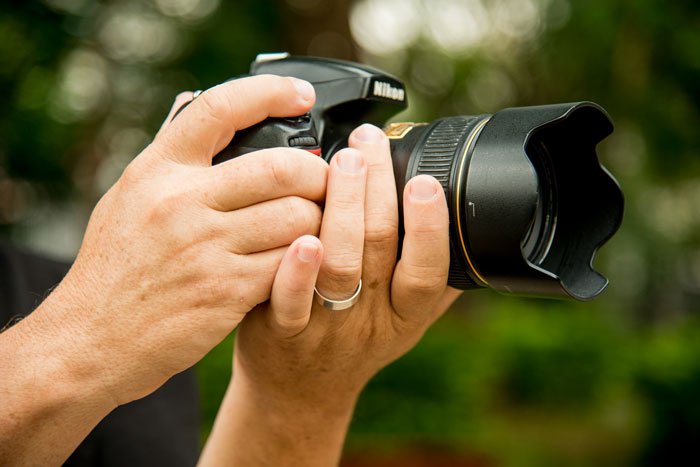11 Reasons a SmartPhone is Better:
Phone Camera vs Digital Camera

by
Kevin Landwer-Johan

Are digital cameras better than phone cameras? This is an interesting question I hear a lot. The question about phone camera vs digital camera is often asked by people who do not own a digital camera.
In this article, I will point out some of the reasons the best smartphone camera has advantages over some digital cameras. In this next article, I write about the benefits of using a real digital camera vs a mobile phone camera.
If you want to learn how to make the switch from using your phone to using a camera, check this out.
It’s important to understand not all phone camera vs digital camera arguments are helpful. A cheap phone will not produce such good images as the best iPhone camera. Much the same as the photos from a cheap compact camera will not match the quality of photos taken with a top DSLR camera.

What are the Pros and Cons? Phone Camera vs Digital Camera
Phone Camera pros:
- Your Phone is Always with You
- A Smartphone is Easy to Use for Photography
- Mobile Phone Cameras Are Quicker to Take Photos With
- Smartphones are Much Smaller than Digital Cameras
- Sharing Mobile Phone Photos is Easy
- The convenience of Cloud Backup from your Smartphone
- Your Smartphone is a Multi-Purpose Device
- Cell Phones Have Bigger Monitors
- Edit Your Cell Phone Photos On the Fly
- Phones Can Do Things Most Cameras Cannot
- Phone Cameras are Better for Selfies
Phone Camera Cons:
- Smartphone Cameras Take Poor Quality Photos
- Creative Photography with your Smartphone is Limited
- Phones Have Limited Lens Options
- Digital Zoom Creates Very Poor Quality Photos
- Smartphones Aren’t Great In Low Light
- Action Photos with a Mobile Phone are Challenging
- Smartphones Never Look Professional
- Sensors in Smartphones are Small
- Small Lenses on Smartphone Cameras are Limiting
- Everything in you Phone Photos is in Sharp Focus
- Smartphone Cameras are too Easy to Use
My Switch from Phone to Camera course is now available on YouTube for FREE!

11 Reasons Your Phone Camera Can Be Better
1. Your Phone Camera is Always with You
The best camera is the one that you have with you. You pretty much always have your phone with you. You can make use of it whenever you find something you want to photograph.
Always having your phone with you means you’re more likely to use it. Because you use it often, you become more proficient and take better photos. But what if you had a digital camera with you to use as often as you wanted to?
You would learn to take better photos with it and enjoy the benefits of higher quality photos. But that’s a choice for you to make. So I’ll leave this reason as a positive because most of us have a phone with us most of the time.
2. A Smartphone is Easy to Use for Photography
Grabbing your phone to catch a quick snapshot is easy. You hardly need to think about what you are doing. Just pick it up, activate the screen, and tap it a few times. You have your photo. Easy.
You don’t need to think about setting it to get your photo in focus and well exposed. The software on your phone does all this for you.
3. Mobile Phone Cameras Are Quicker to Take Photos With
It takes you very little time to take a photo with your iPhone camera vs a digital camera. Using your DSLR or mirrorless camera takes longer because you have to do more with it.
By the time you have your digital camera turned on and in focus, you could have already taken a photo with your smartphone and put it down again.
Just a note … just because you can take a photo more quickly does not mean your photo will be better. It is a plus for mobile phones that you can use them quickly. But you’ll take more interesting photos when you learn to take your time.

4. Phone Cameras are Much Smaller than Digital Cameras
You can be so much more discrete taking photos with an iPhone vs a digital camera. In recent years people all over the world have become accustomed to seeing people using cell phones to take photos. No one pays attention anymore.
Using a larger DSLR or even a mirrorless camera you are more conspicuous than when you take photos with your smartphone.
5. Sharing Mobile Phone Photos is Easy
Sharing your pictures with the world via social media is the most common use of photos. This is so easy with your iPhone or Android phone.
There are now some digital cameras that allow you to share your photos online directly. But they are not as convenient as sharing photos you take with your mobile phone.
6. The convenience of Cloud Backup from your Smartphone
Backing up all your photos to the cloud is very easy with your smartphone. Being connected to the internet your phone can send photos you take to the cloud without you having to think about it. Later you’ll be able to access them from your iPad, computer, or phone and share them with family and friends.

7. Your Smartphone is a Multi-Purpose Device
Smartphones can be seen as the jack of all trades. You can do so much with them, not only taking photos and videos.
You can use tools on your phone to help you enhance your photography skills. There are all manner of helpful photography apps to download. You can keep lists of subjects you want to photograph. Storing example photos to inspire you is easy.
8. Cell Phones Have Bigger Monitors
It’s easier to see what you’re photographing and to review the pictures you have taken. Zooming into the detail you can see so much on the monitor of a smartphone. This allows you to see if your focus is good and you’re capturing what you want in your photos.
Composing photos using a smartphone monitor is much easier for many people. Being able to clearly see everything you are framing is an advantage. Having to look at the small screen on the back of a digital camera can be difficult.
9. Edit Your Phone Camera Photos On the Fly
There are some great photo editing apps available for both Andoird cell phones and iPhones. With these apps you can filter and adjust your pictures on the fly before you send them to your friends.
Creating your own style you can then quickly apply a filter to your photos giving them a specific look. People will get to recognize your skills.

10. Phones Can Do Things Most Cameras Cannot
Many things a smartphone camera can do that a digital camera cannot are gimmicky, but can be fun. One feature on my phone I love, that’s not a gimmick, is the panorama mode.
Creating panoramas with a cell phone camera is much easier than using a digital camera to make them. With a phone, you can take panorama photos with no need to join lots of photos together.
Experimenting beyond the typical way panoramas are normally made is also a lot of fun.
11. Smartphone Cameras are Better for Selfies
Taking selfies with a smartphone is the biggest advantage when compared to a DSLR or mirrorless camera. Although some digital cameras have monitors you can adjust, a smartphone is often easier to take a selfie with.
Having front-facing cameras and large monitors allows you to see what you’ll look like before you take the picture. The wide lens on your phone gives you the ability to take a photo from arm’s length. But, be careful, a wide-angle lens is not the most flattering if you line it up poorly.

11 Reasons Your Smartphone Camera May Disappoint You
1. Phone Cameras Take Poor Quality Photos
Don’t expect to see a photo taken with your smartphone look great on a monitor or in print. Photos you take on your phone may look good on your phone, but often will not look so wonderful when enlarged.
2. Creative Photography with your Smartphone is Limited
Smartphone cameras are designed to be easy to use. They are automated and software controlled so you don’t have to think much about what you are doing when you take a picture.
The problem is if you do want to think about what you are doing and put some creativity into your photos. Using a digital camera you have far more scope to make creative photos than with your cell phone.
3. Phone Cameras Have Limited Lens Options
Modern phones come with more than one lens. This is an advancement in technology, but still is no comparison to using a DSLR or mirrorless camera.
A mobile phone lens usually does not zoom. It is a fixed, wide-angle lens that has limited ability. If you want to get closer to your subject you have to move. You cannot optically zoom your lens.

4. Digital Zoom Creates Very Poor Quality Photos
The only capacity to zoom in with a smartphone camera is to use the digital zoom function. This is never a good option. Rather than zooming optically with the lens, the digital zoom function enlarges the are of the photo. This means the picture quality is reduced.
I recommend turning off the digital zoom function on your phone as it usually produces very disappointing results.
5. Smartphones Aren’t Great In Low Light
At a glance, photos taken on your phone at night might look ok. But generally, they are of poor quality. Any photography when the light is low challenges a camera. The small lens and sensor on your cell phone camera will not manage to take great photos in low light.
Algorithms in smartphone software are improving and this means low light photography is too. But, when you enlarge a photo taken in the dark or add filters to it, you’ll notice on inspection the poor quality of the image.
6. Action Photos with a Mobile Phone are Challenging
Try capturing your kid’s soccer match or action at a cultural performance on your smartphone. You’ll find if difficult. Focusing is challenging. Timing can be hindered. Action photography takes practice to perfect with any camera. Having the right camera for the job makes all the difference.

7. Smartphones Never Look Professional
If you want to up your photography game, you’ll need to move on from always using your mobile phone to take pictures with. Looking professional can make all the difference, even when you’re not a pro.
8. Sensors in Smartphones are Small
No matter how many megapixels are crammed into your smartphone sensor, it is still small. Even compact cameras have larger sensors than iPhone cameras.
The number of megapixels on your phone camera may be very high, but the physical dimensions of the sensor are very small. The larger the sensor, the larger the pixels are. This means better quality photos.
9. Small Lenses on Smartphone Cameras are Limiting
Lenses on phones are very small. Often they are made of plastic. A lens is one of the most important aspects of capturing good quality photographs. Tiny lenses mean the quality of the photos is not comparable to the quality of photos taken with a high-quality glass lens of a good digital camera.

10. Everything in you Phone Photos is in Sharp Focus
With a digital camera, you can capture a sharp subject and have the background nice and blurred. You cannot do the same with a smartphone camera. Some phones and apps allow you to fudge this technique, but the results are rarely so good.
The small sensor and wide lenses used in smartphone cameras mean they are not capable of creating a blurred background.
11. Smartphone Cameras are too Easy to Use
Do you often slow down and really think about the photos you take with your smartphone? This is one of the essential differences with smartphone photography vs DSLR photography.
Slowing down and taking your time you will usually take better photos than when you’re using your phone camera to take snapshots.
This is not so much to do with the device you are using, but how you use it. Smartphones are designed to be quick and easy to use and this is how we normally use them.

Why Use a Phone Camera vs Digital Camera?
Hopefully, the two lists above will help you decide what you think about the phone vs camera question.
Many of the choices you make about photography equipment will relate to your lifestyle and budget. Some people are quite convinced that their iPhone takes better pictures than a camera. Others are more concerned with the lack of image quality that smartphones produce.
If you’re enjoying taking photos with your phone and considering upgrading to a DSLR or mirrorless camera I hope this article helps you choose between a phone vs camera.
How To Transition from Using Your Phone to Using a Camera: Phone Camera vs Digital Camera
It takes time, study, and practice. Check out this video to learn more and read the articles here for a step-by-step guide on how to make the transition from taking photos with your photo to using your camera effectively.
I have also developed a full course teaching you how to make the change from using your phone to taking photos with your camera. There are 30 lessons, each one focused on a specific topic. Each lesson is accompanied by a practical exercise that will help you better understand the teaching and put it into action.
Please click this link to start ‘Making the Switch from Phone to Camera – One Month MasterClass’. This course is designed so you can take one lesson per day and complete it in a month. Or you can take your time and spread your learning experience out over a longer period of time.
My Switch from Phone to Camera course is now available on YouTube for FREE!
Further Reading
If you’ve enjoyed this article you will enjoy reading my step by step guide on making the transition from phone to camera – How to Start Taking Photos with Your Digital Camera.
You’ll probably also love my course on how to make the switch from taking photos with your phone to taking photos with a camera. You can check out the course by clicking here.


this is so great thanks admin
I have a Panasonic camera and a Motorola G7 + phone. Pictures on my phone always look good and sometimes astonish me. During the pandemic restrictions I took a few pics of the trains flashing past near where I live. All of them were beautifully in focus, one of them at over 1000th of a second at f1.7. I found this amazing that the phone could in a mere fraction of a second work out what shutter speed was required and get the great image. Rumors of a 10 times optical zoom on next iPhone show the direction of travel. My phone also shoots RAW. Amazing really what a phone can achieve as a camera.
Nice post thanks a lot for sharing as it comes with a lot of details and it has been very helpful.
Well, it depends on the phone. I recently purchased an iPhone 13 and the quality of night photos is terrible. They’re blurry and not clear. The quality of the videos is not even worth mentioning.
Low light and night photography is always challenging for any phone or camera. Technology is improving in this area, but there’s still a long way to go.
I have a Samsung S22 Ultra and it’s low light capabilities are superb. It beats my Canon EOS 800 every time. I now find that I do better in Photo competitions with my phone pictures. Improvements in Phone post processing means you don’t have to be a photo shop expert to win a competition. Modern phones don’t even need flash in low light indoor photography. I considered selling my Canon gear but find it so hard to let it go :(.I find that most winners in photo competitions produce high contrast photos with post processing or using PS Presets. Phones have all that built in.
I think you’ll find the technical quality of your phone photos are no match for the ones you take with your camera. The phone makes many things about taking quick pictures, but when a camera with a good lens is used skillfully, there’s no match for quality and creative control.